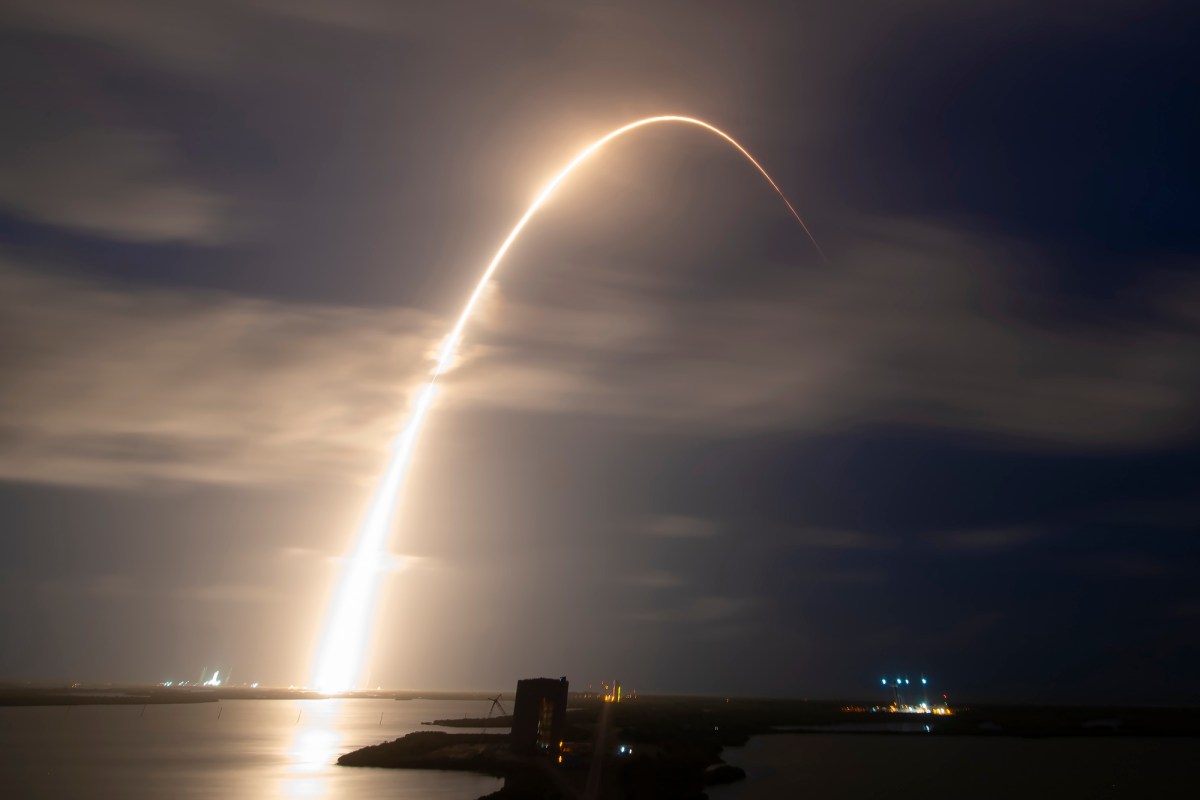WASHINGTON — A Falcon 9 successfully placed into orbit a pair of Galileo navigation satellites April 27 in a launch that was unusual in several aspects.
The Falcon 9 lifted off from the Kennedy Space Center’s Launch Complex 39A at 8:34 p.m. Eastern, carrying the Galileo GM25 and FM27 satellites. The European Union Agency for the Space Programme, or EUSPA, the EU agency that handles Galileo operations, confirmed the satellites were in orbit and operating several hours later.
The launch took place with a degree of secrecy usually reserved for classified national security launches. SpaceX provided no video from the launch after stage separation and ended its webcast after confirmation of payload fairing separation. The company deferred to the customer for further updates on the mission.
It was unclear what prompted the heightened secrecy. Previous Galileo satellite launches on Ariane and Soyuz rockets from French Guiana had greater coverage, as have Falcon 9 launches of Galileo’s American counterpart, the Global Positioning System.
Neither the European Commission nor the European Space Agency publicized the launch in advance. In statements after the successful launch, European officials studiously avoided mentioning how the satellites were launched.
“2 new Galileo satellites successfully launched last night,” Thierry Breton, EU commissioner for the internal market, posted on social media April 28. “Awaiting Ariane6, the 2024 launches are crucial for Galileo’s resilience, robustness and continuity of its civilian & military applications.”
That statement came the closest to acknowledging why the satellites were launching on Falcon 9. The retirement of the Ariane 5, loss of access to the Soyuz rocket after Russia’s invasion of Ukraine more than two years ago and delays in the introduction of the Ariane 6 left Europe without its own means of launching Galileo satellites, a situation dubbed a “launcher crisis” by ESA Director General Josef Aschbacher.
Breton said in November 2023 that the European Commission was finalizing a deal with SpaceX for two Falcon 9 launches, each carrying two Galileo satellites, scheduled for 2024. That contract was valued at 180 million euros ($193 million), he said.
This launch was the second European institutional mission to fly on a Falcon 9 because of the ongoing launcher crisis, after the launch of ESA’s Euclid space telescope in July 2023. Another pair of Galileo satellites will launch on a Falcon 9 later this year, along with separate Falcon 9 launches of ESA’s EarthCARE Earth science mission and Hera asteroid mission.
For SpaceX, this launch was the 20th flight of this booster, tying a reuse mark set earlier in the month by another booster launching a set of Starlink satellites. The booster previously launched missions ranging from a GPS satellite and Intuitive Machines’ IM-1 lunar lander to 13 sets of Starlink satellites.
The launch was also the final mission for this booster, designed B1060. SpaceX said the additional performance required to place the Galileo satellites into medium Earth orbit meant that the booster could not be recovered. It broke a streak of 146 Falcon 9 launches with a booster landing dating back to November 2022, when SpaceX conducted back-to-back Falcon 9 launches carrying geostationary satellites where the boosters were expended.
“We’re working toward qualifying our fleet of Falcon boosters and fairings to support 40 missions each,” the company stated after liftoff, noting that this launch was the 200th to use previously flown payload fairings.
